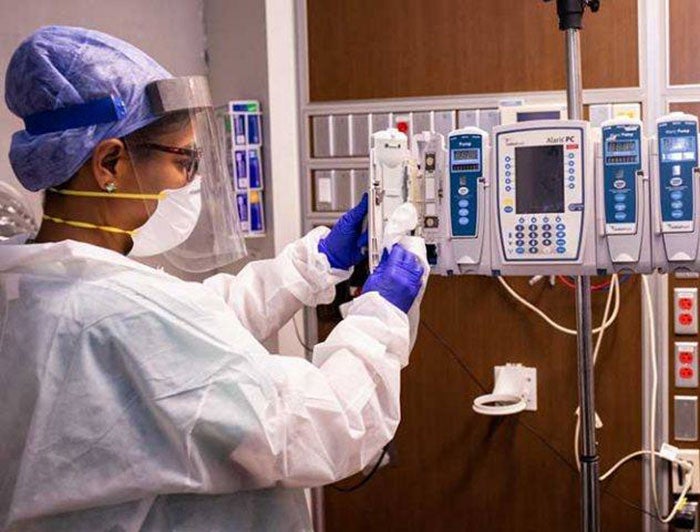Mount Sinai Beth Israel: Getting To Zero in 2022

Hospitals strive every day to reduce the risk of healthcare-associated infections, such as catheter-associated urinary tract infections (CAUTI), central line bloodstream infections (CLABSI), and Clostridioides difficile (C. diff). Achieving zero infection rates is extremely difficult due to the variations in care delivery. According to the Centers for Disease Control and Prevention, about 1 in 25 U.S. hospital patients is diagnosed with at least one infection related to hospital care each year.
The Mount Sinai Beth Israel team in New York City knows that the journey to high reliability begins with focusing on the fundamentals of proper infection prevention and control practices. In 2022, the hospital achieved zero harms by following fundamental protocols with consistency and efficiency. Their remarkable results include a standardized utilization ratio (SUR) for central lines at less than 40% of the national average and indwelling urinary catheter SUR at less than 70%.
Creating a safety culture and preventing HAIs takes hospital leaders who support infection prevention and control as an organization-wide priority, frequent opportunities to provide and promote IPC training and consistent adoption and deployment of proven process improvement tools and methods. But the real game changer that helped drive success at Mount Sinai Beth Israel was effective communication.
For example, the hospital consistently shared daily email updates on patients with central lines and urinary catheters. The infection prevention and control (IPC) team sends emails daily with a list of all patients with central lines and a separate list of patients with Foley catheters. These emails include details of how long the device has been used and if there were issues with documentation of care about these devices.
The IPC teams ask for indications of need/usage and highlight patients with femoral lines and multiple central lines. Emails about urinary catheters highlight patients with missing catheter orders and patients who have had an indwelling urinary catheter in place for more than five days. For urgent device-related issues, care team members message providers in real-time using the electronic medical record’s secured chat function. This chat function asks about patients with central lines in place for longer than 3 days.
Through these simple yet reliable methods of regular communication, all care teams had the information they needed when they needed it to prevent unnecessary insertions and curtail durations when the devices were no longer necessary. Waleed Javaid, MD, Hospital Epidemiologist and Director of infection prevention and control at Mount Sinai Downtown, noted, “Low device utilization rates are the key to their success. If there is no device, no risk for device-associated infection exists, and if there are a low number of devices, it is easier to focus efforts to better care for these devices”
At Mount Sinai Beth Israel, trust is essential to creating a safety culture throughout the organization. And that too takes reliable and consistent communication with team members at every point of care — from the front lines to the C-suite.
“We discuss infection rates and new infections in daily leadership meetings, unit huddles and during unit rounding,” said Dr. Javaid. “We have an open dialogue with our clinical teams, which helps us understand the causes of hospital onset infections and opportunities to prevent them. This gives front-line staff the confidence to voice their concerns and identify potential problems, which helps mitigate these issues before they result in hospital-onset infections. An infection preventionist is available to answer staff questions as needed.”
Mount Sinai Beth Israel’s constructive communication strategies have created a holistic, synergistic model focused on reducing HAI rates. “Our interventions, when taken as a whole, are truly greater than the sum of their parts,” added Dr. Javaid.
Key Takeaways
Targeted Problems: CLABSI, CAUTI, and hospital-onset CD
Interventions Used:
- Consistently communicate among care teams and openly discuss infections with frontline staff and leadership
- For CLABSI and CAUTI, daily emails are sent with a list of patients with lines and urinary catheters
- For CDI and urine culture testing stewardship, teams are required to discuss if testing criteria are met; final approval goes to an infectious diseases physician.
- Returned back to the basics; asked frontline and agency staff to use the CLABSI prevention bundle and invited them to provide feedback on how to improve their use of it
Impact: Zero CLABSI, CAUTI, and hospital-onset CDI since January 2022

